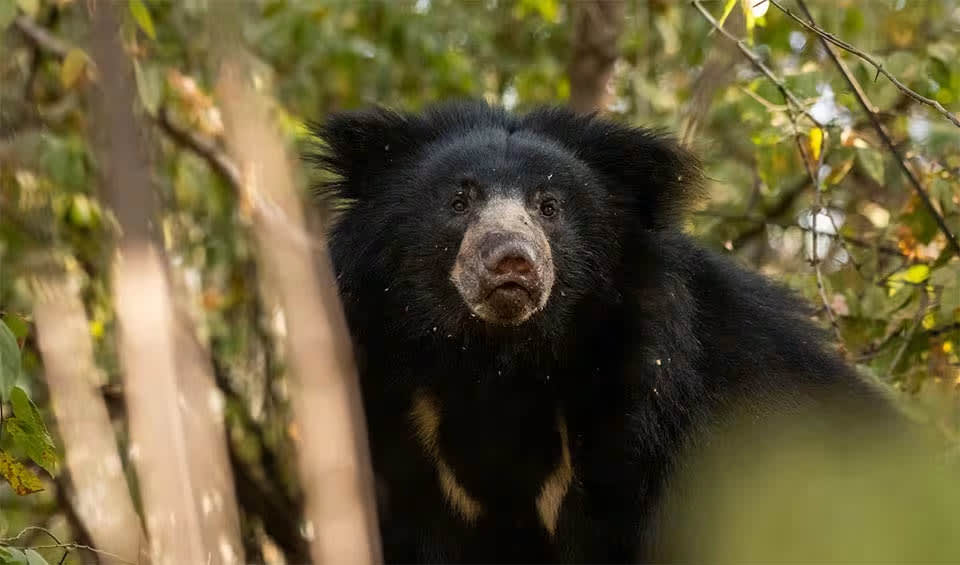Native to the Indian subcontinent, it is a distinctive member of the bear family, Ursidae, primarily due to its unique dietary preferences, physical characteristics, and behaviors. Unlike other bear species that exhibit omnivorous diets, the Sloth bear has specialized in myrmecophagy – the consumption of ants and termites – which significantly influences its physical adaptations and ecological niche.
Sloth bears possess several unique adaptations that facilitate their insectivorous diet. Notably, adult Sloth Bears lack the upper incisors, creating a gap that, along with their long, flexible lips, allows them to effectively suck up ants, termites, and other insects in a manner akin to a vacuum cleaner. This efficient feeding mechanism is further supported by their ability to close their nostrils voluntarily, protecting them from insect bites and dust while raiding termite mounds or beehives.
Another distinctive feature of Sloth Bears is their shaggy coat, which ranges from black to rust-brown, with a characteristic “V” or “Y” shaped white or yellow chest mark. They have a mane around the face, giving them a somewhat lion-like appearance, and long, curved claws for digging into termite mounds.
Sloth bears exhibit remarkable parental care, most notably in their habit of carrying their young on their backs, a behavior not commonly observed in other bear species. This mode of transport provides the cubs with safety from ground-based threats and allows them to learn by observing their mothers’ foraging behaviors up close.
Despite their adaptability and specialized niche, Sloth bears face several threats that have led to a decline in their populations. Habitat loss due to deforestation and the expansion of agricultural land significantly impacts their living spaces and food sources. Additionally, Sloth bears sometimes come into conflict with humans due to their aggressive behavior when surprised or threatened, leading to them being hunted or captured for performance purposes in circuses and road shows, despite legal protections against such practices.
Distribution
 Bangladesh
Bangladesh Official estimate
Official estimate
 Bhutan
Bhutan India
India Nepal
Nepal Sri Lanka
Sri LankaRecent updates
Feb 2022: The Madhya Pradesh Forest Department in India launched a project to protect sloth bears by planting fruit trees in areas where the bears are known to live. The initiative aims to provide a sustainable food source for the bears and reduce their reliance on human-populated areas for food.
Nov 2021: The Sloth Bear Foundation launched a new program in Nepal to reduce human-bear conflicts and promote coexistence. The initiative involves working with local communities to implement measures such as building fences, installing motion sensor cameras, and conducting educational workshops.
Sep 2021: The Indian government announced that it would establish a new sloth bear sanctuary in the western state of Gujarat. The sanctuary will provide a protected habitat for sloth bears, as well as other wildlife species.
Anything we've missed?
Help us improve this page by suggesting edits. Glory never dies!
Suggest an editGet to know me
Terrestrial / Aquatic
Altricial / Precocial
Polygamous / Monogamous
Dimorphic (size) / Monomorphic
Active: Diurnal / Nocturnal
Social behavior: Solitary / Pack / Herd
Diet: Carnivore / Herbivore / Omnivore / Piscivorous / Insectivore
Migratory: Yes / No
Domesticated: Yes / No
Dangerous: Yes / No





